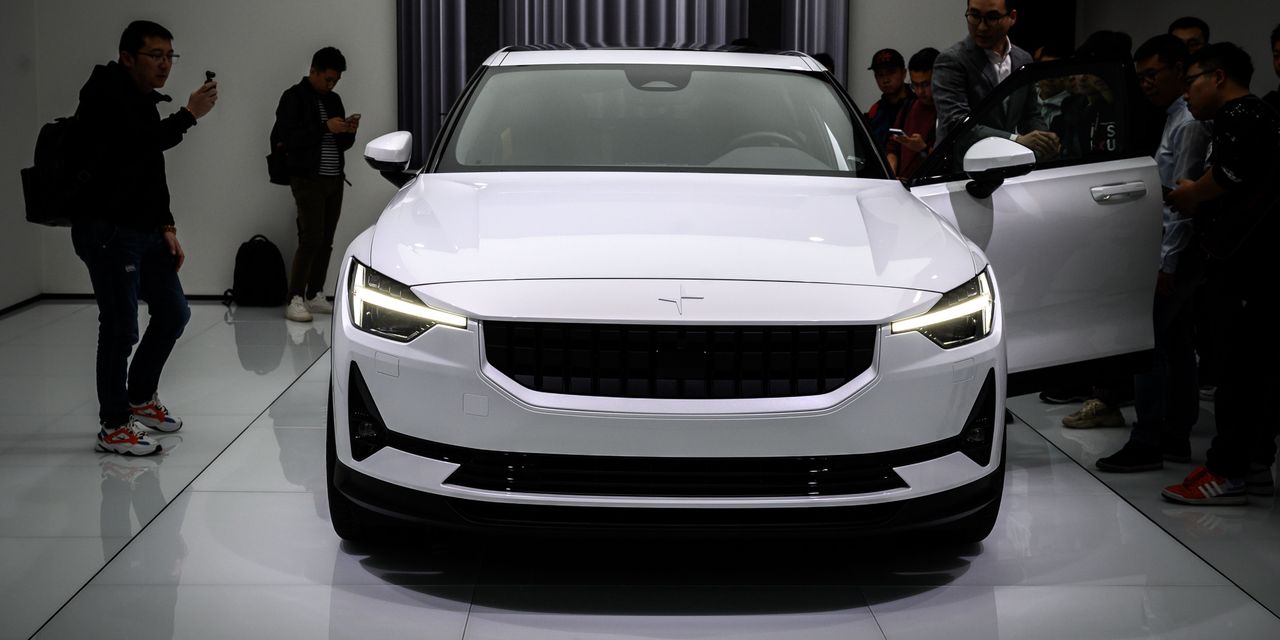Polestar EVs are assembled outside the U.S. so they don’t qualify for the credit if someone buys the cars outright.
Fabrice Coffrini/Getty Images
American car buyers can get a $7,500 purchase tax credit from the federal government if they buy a qualifying electric vehicle. A loophole related to leasing makes it possible to capture that savings even for vehicles that don’t qualify.
Figuring out the EV purchase tax credit, passed as part of the Inflation Reduction Act, hasn’t been easy for anyone. Changing policies from the Internal Revenue Service add to the complexity.
U.S. car buyers are supposed to get $7,500 off their federal tax bill for an EV purchase if they meet several conditions. Buyers can’t make too much money, the EV can’t be too expensive, and the vehicle must be assembled in North America. The batteries and the materials used to make them must meet local-content requirements.
Trucks and SUVs have a price cap of $80,000 to qualify for the credit. Sedans and crossover vehicles have a $55,000 cap.
To illustrate the complexity of it all, and how the playing field changes, the IRS started out by saying the
Ford Motor
(F) Mustang Mach E and the
Tesla
(TSLA) Model Y were subject to the $55,000 cap. It hen reversed that decision, saying they would be eligible for the $80,000 limit that applies to SUVs, trucks, and vans. The reversal came after Tesla slashed U.S. prices for its Model Ys, bringing them under the $55,000 limit.
The IRS also has been changing its position on the battery and battery-material requirements to start the year. To start 2023, it appeared to ignore them and just said that all EVs assembled in North America under the price caps got the full tax credit. That’s changing. The IRS will publish a new list of qualifying EVs in mid-April that incorporate the battery and battery-price restrictions.
Working out how to get a credit feels as if it requires a law degree. Car buyers can forget all the details and just lease an EV. Leased vehicles qualify for the credit, even if they aren’t assembled in the U.S.
Section 45W of the law “qualified commercial clean vehicle credit of up to $7,500 if the gross vehicle weight rating is less than 14,000 pounds,” says accounting expert Robert Willens. “All of the requirements we’ve been talking about for battery content, etc. do not apply for this purpose.”
The vehicle only needs to be held for “use in the purchaser’s trade or business or for lease, and not for resale.” The lessor gets the benefit. If the lessor wants to pass the savings on to the consumer, they can.
Hyundai
(005380. Korea) and
Polestar Automotive
(PSNY) both sell EVs that are assembled outside the U.S. and, therefore, don’t qualify for the $7,500 purchase tax credit if someone buys those cars outright. But both companies will reduce the price of an EV if a customer leases it.
In the case of Polestar, the benefit is explicit on the company’s website: “Receive a $7,500 Clean Vehicle Lease Rebate on all Polestar vehicles through May 1.” The company, essentially, calculates the lease based on the cost of the car, minus $7,500. Instead of getting a tax benefit, car buyers pay a little less each month.
Polestar didn’t immediately respond to a request for comment about its plans after May 1.
The lease loophole opens up many more EVs to car buyers looking to go electric. They just have to make sure that the credit is passed onto them. Shoppers shouldn’t forget to ask.
The ins and outs of this aren’t an academic matter. They have real effects on U.S. car sales.
Take Hyundai. Its Ioniq 5 sales dropped 8% year over year in the first quarter of 2023 The company sold 5,736 units in the U.S., down from 6,244 units sold in the first quarter of 2022. The drop came as overall EV sales rose at
General Motors
(GM), Ford and Tesla.
Car buyers might not have realized the leasing benefit existed. They should now.
Write to Al Root at [email protected]
Read the full article here










